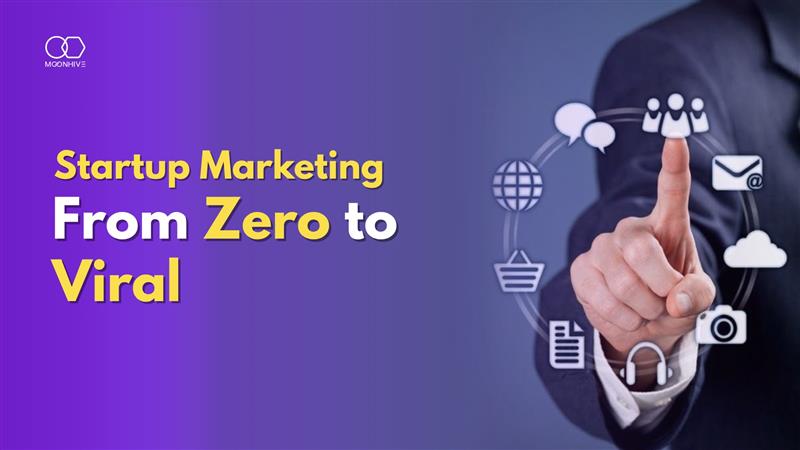A Realistic Guide for Founders Who Want to Be Heard
Marketing can feel like a mystery when you’re first starting out. You’ve built your MVP, you’re proud of what you’ve created, and now… you wait for the world to discover it. Except they don’t. Because in the startup world, if no one hears you, it doesn’t matter how good your product is. Marketing isn’t a side task it’s part of the product journey itself.
I’ve seen this pattern over and over. A founder launches something meaningful, but visibility remains low. Early adopters don’t show up. Interest stalls. Not because the product is bad but because no one knows it exists.
That’s where smart, intentional startup marketing comes in. And the good news is, it doesn’t require a massive budget. It requires understanding your audience, choosing your focus channels, and showing up with a message that resonates. It’s not about shouting louder it’s about speaking clearly to the right people.
Before diving deeper, if you haven’t yet built or validated your product idea, I strongly suggest you take a look at our 10-Step Roadmap for Launching Your Startup. It lays the foundation that your marketing strategy should grow from. If you’re already past that and want to avoid missteps, you might also find value in our article on 10 Mistakes to Avoid When Launching a Startup marketing misfires are a big part of that list.
So how do you go from zero awareness to real buzz? It starts with a story.
Find your narrative and make it real
Great marketing isn’t just about promoting what your product does. It’s about why it matters. When you’re a startup, your story is often your strongest asset. Share what problem you’re solving, how it affects people’s lives, and why you care so much about solving it. Don’t wait until you’re established that journey itself is the brand.
Even your imperfections become marketing material. Documenting your product-building process, customer insights, or lessons from early failures shows you’re real, human, and worth supporting. People root for progress, not perfection.
Marketing in this stage is more like starting a conversation than closing a deal. That’s why I often say: your first followers are not customers they’re community.
Choose one or two key channels, and do them well
In the early days, trying to “be everywhere” is a fast way to burn out. Instead, pick one or two channels where your target users actually spend time and go deep. That might be LinkedIn if you’re building a B2B SaaS product, Instagram if your brand has a strong visual story, or email if you’re collecting waitlist interest.
Consistency beats perfection here. You don’t need a perfectly designed content calendar you just need to show up, learn what resonates, and stay responsive. Marketing isn’t a set-it-and-forget-it activity. It’s a loop of communication, adjustment, and trust-building.
And if you’re building something before you launch, you can still start marketing now. In fact, marketing before your MVP goes live can help you build an early waitlist, gather feedback, and find your first users faster. You can revisit our guide on Startup Metrics 101 to start measuring the impact of these early marketing efforts.
Leverage your product’s progress as content
Every startup milestone is a chance to create awareness. Launching a beta? Post about it. Finishing a new feature? Record a quick demo. Learning something from a failed test? Share what happened and how you’re adjusting.
Your journey is your content. And your content is your magnet.
You don’t need a full-fledged content marketing team. Many founders start by simply posting on LinkedIn once or twice a week, sharing short updates or stories from their journey. If you stay honest and authentic, the audience will follow slowly at first, then suddenly.
It also helps to align your marketing with your product roadmap. When your communication matches what your product is becoming, your message stays consistent and credible. If you haven’t done this yet, check out our Product Roadmap Template to keep marketing and development in sync.
Stay open to what the audience teaches you
Here’s a truth I’ve learned the hard way: no matter how perfect your message sounds in your head, the market gets the final word.
You may think your tagline is clever but if no one clicks, it’s time to rethink it. You may think a feature deserves attention but if users engage elsewhere, follow their lead. Early-stage marketing is less about “branding” and more about listening and responding.
Real traction happens when your users feel understood. When your product and your message align with what they already care about, marketing becomes a two-way street not a megaphone.
This is also where early metrics come in. Which content drives sign-ups? What traffic sources are most engaged? If you’ve read our Startup Metrics Guide, you’ll already know which signals matter.
The moment buzz begins
Buzz doesn’t happen overnight. It’s the result of repeated actions, tested ideas, small wins, and learning in public. It happens when you consistently show up where your users are with something worth paying attention to.
When your message connects, people share it. When your product delivers, people stay. When both happen together — that’s when buzz begins.
